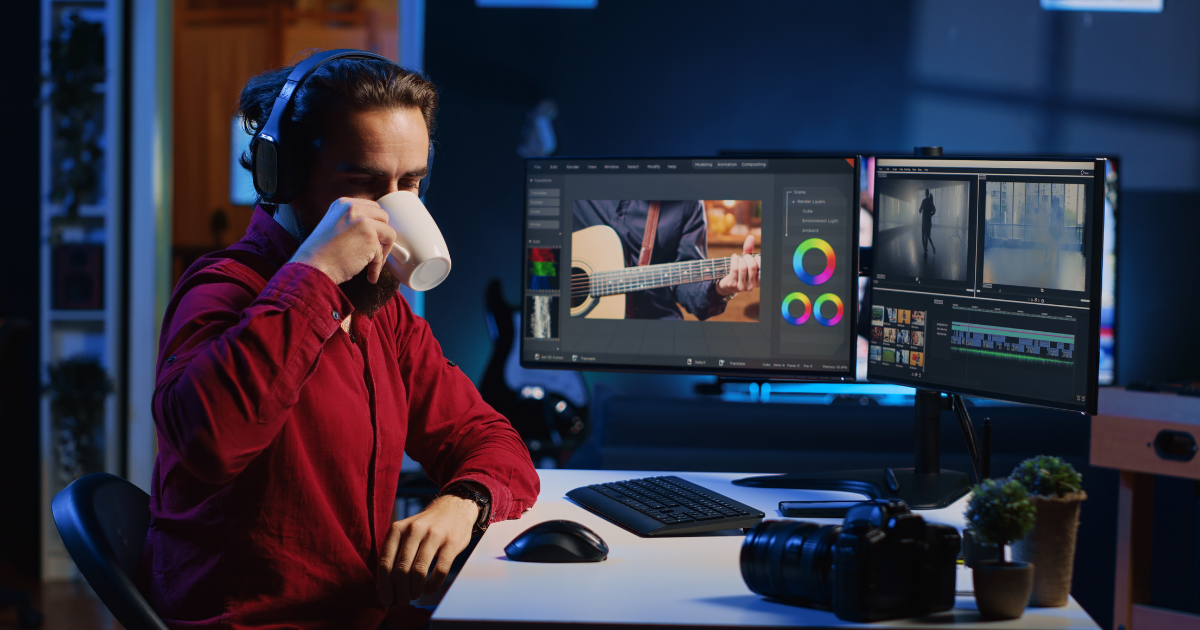You can have the most powerful app, the fastest servers, and the best product-market fit—but if your users can’t figure out how to sign up, navigate your site, or check out without frustration, none of it matters. That’s where a skilled UI/UX designer comes in. A great one doesn’t just make your interface “pretty”—they craft an experience. One that feels intuitive, looks polished, and most importantly, keeps users coming back.
Hiring the right designer isn’t just another box to tick. It’s a strategic move that can impact everything from customer retention to brand loyalty. Whether you’re a startup building your first MVP or an established brand looking to refresh your product, knowing how to hire a UI UX designer who truly gets your audience is more important than ever.
In this blog, we’ll break down the essential steps, questions, and criteria to help you find a designer (or team) that doesn’t just push pixels—but elevates your entire product experience.
Because Great Design Isn’t Just About Looks—It’s About How It Makes People Feel
1. Understand What You Actually Need: UX vs UI vs UI Developers
Before you post that job listing or ping your network, get clear on what kind of talent you really need. Do you need someone who improves how users navigate your app (UX)? Someone who designs the look and feel (UI)? Or both?
- UX Designers focus on functionality, flow, user research, wireframing, and usability testing.
- UI Designers are concerned with visual design—typography, spacing, colors, and consistency.
- UI Developers translate design into code, often working with HTML, CSS, and front-end frameworks.
If you’re building from scratch or overhauling a product, it might make more sense to hire a UI UX designer who can wear both hats. In tech companies with larger teams, UI and UX roles are often split—but in leaner setups, a hybrid designer is gold.
Not sure? Start by listing what you need done: Are you redesigning an app? Creating user flows? Building clickable prototypes? Your answers will help you determine if you need to hire a UX designer, hire a UI designer, or go for the full package.
2. Don’t Hire Based on Dribbble Shots Alone
Design portfolios are visual by nature, so it’s easy to get swayed by glossy shots of landing pages, app mockups, or branding kits. But here’s the kicker—good design isn’t just how it looks, it’s how it works.
Instead of just asking for a portfolio, dig deeper:
- What was the problem the design solved?
- What metrics improved after the redesign?
- How did they collaborate with developers and product teams?
- Did they do user research or just execute a brief?
One study by Forrester shows that a well-designed user interface can increase conversion rates by up to 200%, while better UX design can boost those conversions by 400%. So, yeah—this stuff matters.
When you hire UI UX developers, look for storytellers. People who can walk you through their thought process, design decisions, and the outcome.
3. Evaluate Soft Skills: Communication Is Key
A designer who can’t communicate their ideas clearly will struggle to get buy-in from stakeholders, collaborate with developers, or adapt to feedback. And in startups or small teams, that’s a big red flag.
Here’s what you want to listen for in interviews:
- How do they present their work?
- Can they defend a design decision without being defensive?
- Do they ask thoughtful questions about your users and goals?
- Are they open to iteration?
Design is a collaborative sport. It involves feedback loops, product strategy, user testing, and sometimes… ego clashes. Hiring someone who can navigate that with clarity and confidence is just as important as their Figma skills.
Tech companies that emphasize communication in their hiring process end up with teams that iterate faster, ship smoother, and avoid unnecessary rework. It’s not just about hiring someone to push pixels—it’s about hiring a partner who helps solve product problems through design.
4. Choose the Right Hiring Model: Freelancer, In-House, or Remote?
Now that you’ve narrowed down who you’re hiring, let’s talk about how. Each hiring model has its pros and cons—and the best choice depends on your timeline, budget, and workflow.
- Freelancers are great for one-off projects like redesigns, landing pages, or app audits. Just make sure they have experience working independently and can deliver without too much hand-holding.
- In-house designers bring long-term value. They get embedded into the product team, understand the user journey deeply, and grow with the brand. If you’re scaling, this is a solid move.
- Remote UI/UX designers or agencies offer flexibility and can be especially useful when you need to scale fast. Many tech companies now hire UI UX designers remotely and find it works beautifully—especially with async tools like Figma, Loom, and Notion.
Bonus tip: Some platforms like Uplers, Toptal, or Lemon.io offer vetted remote design talent if you’re not sure where to start.
5. Ask the Right Questions (That Go Beyond “What’s Your Style?”)
Interviews are where you separate the good from the great. But too often, founders ask vague questions like “What’s your design style?” That doesn’t really help you understand how they think.
Instead, ask things like:
- Tell me about a time you designed something that didn’t work. What did you learn?
- How do you balance user needs with business goals?
- What’s your process for working with developers?
- Can you walk me through one of your favorite projects—start to finish?
These questions reveal process, adaptability, and whether they’ll thrive in your environment. Whether you’re aiming to hire UI developers or a cross-functional designer, mindset and collaboration matter just as much as visual talent.
Also, throw in a quirky one. Like: “If your design style was a car, what would it be?” You’d be surprised how much personality shines through those unexpected answers.
6. Budget Smart: What You Should Expect to Pay
Let’s talk numbers. Design isn’t cheap—but good design pays off. That said, prices vary based on geography, experience, and scope of work.
Here’s a general idea:
- Junior Designer (0–2 years): $25–$45/hour or $40K–$60K/year
- Mid-level Designer (3–5 years): $45–$80/hour or $60K–$90K/year
- Senior Designer (6+ years): $80–$120/hour or $90K–$140K/year
Freelancers and agencies may charge per project, with UI/UX redesigns ranging from $5,000 to $50,000+, depending on complexity.
If you’re a startup, it might be tempting to lowball. Don’t. Cutting corners on design early can lead to clunky interfaces, frustrated users, and a costly rebuild down the line.
Instead, be upfront about your budget, scope, and expectations. You’ll attract the right kind of designer—and avoid the ones who ghost after one round of feedback.
Final Thoughts: Invest in Design, Reap Long-Term Rewards
You don’t need to be a design expert to know that great UX builds trust. That clean UI can make the difference between a sign-up and a bounce. Or that a smooth onboarding flow keeps users coming back.
When you’re looking to hire UI UX designers/developers to join your growing team, remember—this hire isn’t just about design. It’s about building a brand experience your users love.
Because in a world full of noise, the companies that win? They make it effortless for users to say yes.
Author Bio;
For such content and more, feel free to contact Colton Harris He’s a highly experienced SEO expert with over 6 years of experience. His extensive knowledge and expertise in the field has helped numerous businesses and individuals to improve their online visibility and traffic. Harris writes and publishes content on business, technology, finance, marketing, and Cryptocurrency-related trends. He is passionate about sharing his knowledge and helping others to grow their online businesses.















